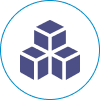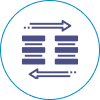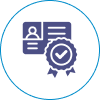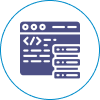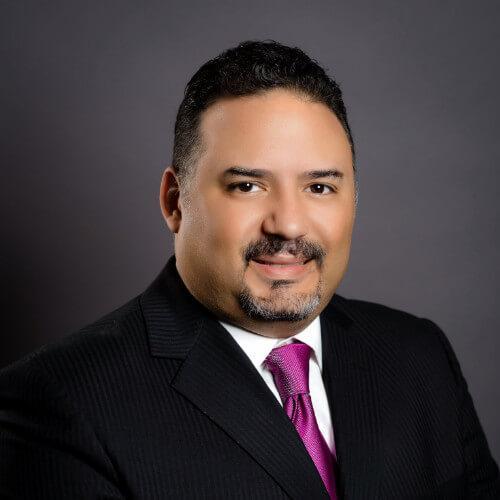Laravel Interview questions
What is laravel?
The well-liked open-source PHP web framework Laravel is renowned for its expressive syntax, developer-friendly
tools, and attractive syntax. Its capabilities, which include middleware, routing, ORM (Object-Relational
Mapping), and a large ecosystem of packages, make it easier to create modern online applications.
Which is the latest Laravel version in 2024?
Laravel 10 is the most recent stable version as of right now (Jan 31, 2024), but Laravel 11 is expected to be
released in Q1 2024.
Top 10 Laravel Artisan Commands
php artisan list: Displays all available Artisan commands.php artisan make:controller : Creates a new cont.php artisan make:model : Generates a new Eloquent model.php artisan migrate: Runs any outstanding migrations.php artisan db:seed: Seeds the database with records.php artisan route:list: Lists all registered routes.php artisan make:middleware : Creates a new middleware.php artisan tinker: Launches the interactive REPL (Read-Eval-Print Loop).php artisan make:migration : Creates a new database migration.php artisan serve: Starts the development server.
What is Laravel and its key features?
The PHP web framework Laravel is renowned for its sophisticated syntax and features that are ideal for
developers. Eloquent ORM, Blade templating, Artisan console, MVC architecture, middleware, routing system, and
Composer integration are some of the important features.
Why choose Laravel over other PHP frameworks?
Laravel is a great option for PHP development because of its sophisticated syntax, strong features, and active
community.
What is the MVC architecture and how does Laravel follow it?
Model-View-Controller, or MVC for short, is a design pattern that divides application logic into three
interrelated parts. This paradigm is followed by Laravel, which divides code into controllers (which handle
application functionality), views (which handle user interface), and models (which represent data).
Explain the directory structure of a Laravel project.
With important folders like app (application code), public (publicly accessible assets), resources (views and
localized resources), and more, Laravel's directory structure is well-organized. It adheres to a tradition that
makes the project easier to keep organized.
Describe the difference between Artisan and Composer in Laravel.
Laravel's command-line tool, Artisan, is used for a number of activities, including seeding and database
migrations. Composer is a PHP dependency management that is used to install and maintain third-party libraries
and packages. Composer is a more general-purpose PHP tool, whereas Artisan is unique to Laravel.
How do you install and configure a Laravel project?
Composer create-project --prefer-dist laravel/laravel project-name is how to install Laravel. Configuration
includes establishing environment variables, the database, and other settings in the.env file.
What are Service Providers and their purpose?
In Laravel, service providers bind and register their services with the application. They are essential to
bootstrapping the framework and offer an extension mechanism for Laravel's capabilities.
Explain environment variables and how to manage them in Laravel.
Configuration parameters are stored outside of code via environment variables. These variables are managed by
Laravel's.env file, which is accessed by the application's config method.
Can Laravel be used for Full Stack development? If so, how?
It is possible to use Laravel for Full Stack development. Both frontend (client-side) and backend (server-side)
development tools are available. Blade templating helps create dynamic views, and Laravel Mix makes asset
compilation easier.
What are the default authentication methods provided by Laravel?
Several built-in authentication mechanisms are available in Laravel, such as password reset, login, and user
registration. To simplify this process, the php artisan make:auth command scaffolds controllers and views for
basic authentication.
Routing:
Explain the concept of routing in Laravel.
The method used in Laravel to specify how an application reacts to HTTP requests is called routing. It enables
the execution of the relevant code by mapping URLs to certain controller actions.
How do you define basic routes in Laravel?
Using the Route facade, basic routes in Laravel are specified in the routes/web.php file. As an illustration:
'/example', 'ExampleController@index', Route::get();
What are named routes and their benefits?
With named routes, you can refer to routes by name rather than their URL. This improves maintainability by
reducing the need for hardcoded URLs and simplifying the management of links and redirects.
How can you define route parameters and groups?
Within the route definition, route parameters are defined by enclosing them in curly brackets {}. Applying
middleware, prefixes, and other shared characteristics to a collection of routes is made possible via route
groups.
Explain middlewares and their role in Laravel.
Filters known as middlewares handle requests as they come into the program. They have the ability to carry out
tasks such as logging, authentication, and request modification prior to it getting to the controller.
How do you create and use custom middlewares?
The php artisan make:middleware tool can be used to create custom middlewares in Laravel. They can be added to
route definitions or routes in the App\Http\Kernel class.
Describe the request lifecycle in Laravel.
In Laravel, there are several steps in the request lifecycle: routing, middleware execution, controller handling,
and response creation. Comprehending this lifecycle facilitates tracking a request's progression through the
application.
What are route prefixes and middleware groups?
Route prefixes improve code organization by enabling routes to be grouped together under a single URL segment.
Middleware groups simplify the implementation of shared functionality by applying sets of middlewares to a group
of routes collectively.
How to implement rate limiting for specific routes?
Using the throttle middleware is how rate limiting is done in Laravel. It can be applied directly in the route
definition or to particular routes in the App\Http\Kernel class.
How to handle 404 errors and route redirects?
In Laravel, you may handle 404 errors by modifying the App\Exceptions\Handler class's render method. In route
definitions, the redirect method or the Route::redirect method are used to accomplish redirects.
Eloquent ORM:
What is Eloquent and its advantages?
Laravel's Object-Relational Mapping (ORM) framework is eloquent, offering a sophisticated syntax for interacting
with databases. Its benefits include the utilization of an active record pattern, enhanced code readability, and
streamlined database operations.
Explain the basic CRUD operations with Eloquent models.
CRUD (Create, Read, Update, Delete) tasks are made easier with Eloquent. Using functions like create(), find(),
update(), and delete(), you can create, retrieve, update, and delete records in models, which are
representations of database tables.
How to define relationships between models (One-to-One, One-to-Many, Many-to-Many)?
Eloquent's hasOne, hasMany, and belongsToMany methods are used to define relationships. A one-to-many
relationship, for instance, is specified as belongsTo in the related model and hasMany in the original model.
Describe Eager Loading and Lazy Loading techniques.
In order to avoid N+1 query problems, Eager Loading loads related models in a single query. Only when a related
model is queried does lazy loading load it, which could lead to several queries.
How to perform data filtering and sorting using Eloquent?
Eloquent provides functions like where(), orderBy(), and latest() for filtering and sorting data. To filter and
sort user data, for example, use User::where('status', 'active')->orderBy('created_at', 'desc')->get().
Explain model events and their usage scenarios.
Model events are set off by certain operations, such as adding, editing, or removing records. They offer hooks to
run code at specific stages of the Eloquent lifecycle, making it easier to do things like update related data or
send notifications.
What are scopes and how to define them in models?
Under Eloquent models, scopes are referred to as query constraints. For reusability, they encapsulate frequently
asked queries. In the model, scopes are specified as methods that can be applied with either the dynamic where
prefix or the scope prefix.
How to implement soft deletes in Laravel Eloquent?
The SoftDeletes trait in the Eloquent model and the addition of a deleted_at field to the database table are how
soft deletes are implemented. Although they are marked as deleted, soft-deleted records are not erased
completely.
Explain database transactions and their usage in Laravel.
Multiple database operations are guaranteed to be atomic by database transactions. DB::beginTransaction()
initiates transactions in Laravel, while DB::commit() commits changes or, in the event of an error, rolls them
back.
How to optimize slow Eloquent queries?
Using indexes on database columns, eager loading relevant data to avoid N+1 query problems, and employing select,
chunk, and chunkById for effective data retrieval are ways to optimize slow Eloquent searches. For additional
optimization, caching and code profiling might be used.
Validation and Security:
Describe the validation system in Laravel.
Developers can provide criteria for data validation using Laravel's validation system. Numerous validation
criteria, such as those pertaining to necessary fields, email format, and numeric limitations, are included.
Form request validation or the validate function can be used for validation.
How to create custom validation rules and error messages?
By extending the Illuminate\Validation\Rule class, one can define custom validation rules. Using the messages
technique, error messages can be defined within the validation rule itself or in the language files.
Explain form request validation in Laravel.
In Laravel, form request validation is accomplished by extending Illuminate\Foundation\Http\FormRequest with a
special class. Authorization logic and rules are included in the class. The user is automatically redirected
with errors if the validation fails.
What are CSRF tokens and their importance in Laravel security?
Tokens for CSRF (Cross-Site Request Forgery) are special codes created for every user session. They are present
in forms to stop malicious activity brought on by requests that are not authorized. For further security,
Laravel automatically creates and validates CSRF tokens.
How to secure Laravel applications against XSS, SQL injection, and other vulnerabilities?
Laravel uses the Eloquent ORM for safe database interactions and automatically escapes output to give protection
against SQL injection and Cross-Site Scripting (XSS). It is recommended that developers utilize parameterized
queries and adhere to security best practices.
Explain user authentication and authorization mechanisms in Laravel.
Pre-built controllers and middleware for user registration, login, and password reset are included in Laravel's
authentication system. Policies and gates are used in authorization management to specify user permissions and
access control.
How to implement password hashing and encryption in Laravel?
For safe storage, Laravel automatically hashes passwords using the bcrypt method. Under the hood, the
password_hash function and password_verify method are used. Laravel's encryption library manages encryption.
Describe JWT authentication and its benefits.
After a successful login, JWT (JSON Web Token) authentication creates a token with user data. Subsequent requests
for authentication are subsequently submitted with this token. Scalability, stateless authentication, and
cross-service authentication sharing are advantages.
How to secure API endpoints in Laravel?
By using authentication methods like Sanctum for token-based authentication or Passport for OAuth2, Laravel
secures API endpoints. Route security and middleware make sure that only authorized users can access the API.
Another option is to use rate limiter.
Explain session management and cookies in Laravel.
A number of drivers, such as the default file driver, database, or cache, are used by Laravel to maintain
sessions. Session identifiers are safely stored on the client side by means of cookies. The session and cookie
capabilities of Laravel offer a smooth method of managing user state and data across requests.
Blade Templating:
What is Blade and its advantages as a templating engine?
Laravel's lightweight yet potent templating engine is called Blade. Its features include seamless integration
with Laravel components, a succinct syntax, and template inheritance.
Explain Blade syntax and control structures (conditionals, loops).
Blade has extra functionality and a syntax similar to PHP. if, else, elseif, unless, switch, case, default, for,
foreach, and while are examples of control structures.
How to create reusable components and layouts in Blade?
include and yield directives help design reusable parts and layouts. Usually, components are kept under the
organization's resources/views/components directory.
Describe Blade inheritance and its benefits.
Blade inheritance enables the use of section and yield to create a master layout with placeholders. The content
can then be added to and expanded upon by child views, encouraging code reuse.
How to manage data and variables in Blade templates?
Blade templates receive data from controllers, and the mustache syntax is used to echo variables. The php
directive additionally permits Blade templates to incorporate PHP code.
Explain slots and sections in Blade templating.
Blade templates use slots and sections for changeable content. A section is defined by the section directive, and
its content is shown by the yield directive. A more adaptable method of managing dynamic content is through
slots.
How to handle errors and exceptions in Blade templates?
By employing the error directive for validation errors and the if condition to check for errors or exceptions,
Blade templates may handle errors and exceptions.
What are Blade directives and their use cases?
Blade directives in Blade templates are custom syntax that carry out particular functions. extends, section,
yield, include, and custom directives made for particular purposes are a few examples.
Explain component registration and usage in Blade.
The component directive is used in Blade to register components. They are useful for creating encapsulated,
reusable UI elements when combined with the component and endcomponent syntax.
How to optimize Blade templates for performance?
Blade templates can be made more performant by reducing the amount of complex logic in their views, making use of
caching when necessary, and reducing the number of database queries by using methods like eager loading.
Optimization is further enhanced by utilizing the once directive for static text and reducing superfluous
whitespace.
Advanced Topics:
What are Queues and Jobs in Laravel?
A means for processing time-consuming operations asynchronously is provided by Laravel's queues and jobs. Jobs
are units of labor that are arranged in queues for the application's queue worker to process.
Explain caching mechanisms and their benefits in Laravel.
The caching algorithms of Laravel temporarily cache data to enable speedy retrieval. Benefits include decreased
needless calculations and database requests, which enhance efficiency.
How to implement event broadcasting and real-time applications?
Laravel's event broadcasting feature enables real-time client and server communication. For real-time updates, it
is accomplished using broadcasting events and a suitable driver such as Laravel Echo or Pusher.
Describe Laravel Mix and its usage for asset compilation.
A fluid API for specifying Webpack development phases is called Laravel Mix. By offering a clear, expressive API
for creating asset pipelines and managing operations like compiling CSS and JavaScript, it streamlines the asset
compilation process.
Explain the Laravel testing ecosystem and testing strategies.
PHPUnit is a component of Laravel's testing ecosystem that is used for Laravel Dusk unit, feature, and browser
testing. Writing tests at different levels (unit, acceptance, and integration) is part of testing methodologies
used to guarantee application reliability.
How to deploy and manage Laravel applications in production?
Applications built with Laravel can be made available via a variety of means, such as Git deployment or tools
like Laravel Forge and Envoyer. Monitoring, database migration, and environment configuration are all factors in
production management.
What are Laravel packages and their installation methods?
Reusable snippets of code that increase Laravel's capabilities are called packages. Composer, the package
management for Laravel, can be used to install them by using commands like composer need vendor/package.
Explain package development and best practices in Laravel.
In Laravel, package development entails building independent packages with predefined features. The PSR-4
autoloading standard, comprehensive documentation, and compatibility with Laravel versions are examples of best
practices.
Describe the Laravel community and its resources.
The lively and dynamic Laravel community is made up of developers, contributors, and fans. The Laravel
documentation, forums, Laravel News, Laracasts, and local gatherings like Laracon are among the resources.
How do you stay updated with the latest Laravel developments?
It's important to study the official documentation, subscribe to newsletters, follow Laravel News, participate in
the Laravel community on social media and in forums, and keep up with Laravel advancements. Plus, going to
Laravel events, such as Laracon, gives you access to the newest releases and trends.
Bonus Questions:
Compare and contrast Laravel with Symfony or Yii.
The PHP frameworks Laravel, Symfony, and Yii have distinct ideologies. Yii places a higher priority on efficiency
and productivity, Symfony on modularity and flexibility, and Laravel on simplicity and elegance.
Discuss common performance bottlenecks in Laravel applications.
improper database queries, excessive Eloquent usage, a lack of caching, and improper use of third-party packages
are common Laravel speed problems. Appropriate optimization techniques can deal with these problems.
Explain Docker containerization and its benefits for Laravel projects.
Packaging Laravel apps with their dependencies into separate containers is made possible by Docker
containerization. Scalability, ease of deployment, and consistency across environments are among the advantages.
Describe API development best practices in Laravel.
RESTful principles, resource controllers, versioning, using tools like Swagger to provide adequate documentation,
and token or OAuth-based API security are some of the best practices for API development in Laravel.
Discuss common design patterns used in Laravel development.
MVC (Model-View-Controller), Singleton, Observer, Repository, and Factory patterns are common Laravel design
patterns. These patterns support maintainability, scalability, and organization of the code.
Explain unit testing vs. integration testing in Laravel.
While integration testing examines how components interact with one another, unit testing tests individual code
units separately. Both are supported by Laravel's testing framework, which uses Laravel Dusk for browser
automation and PHPUnit for unit tests.
How to handle errors and exceptions gracefully in Laravel applications?
The try-catch block in Laravel is used to elegantly manage exceptions and errors. For centralized error handling,
additional custom exception handlers can be specified in the App\Exceptions\Handler class.
Describe code version control and Git workflow in Laravel development.
Using Git is common in Laravel code version management. Feature branching, pull requests, and continuous
integration are typical Git workflows. Collaboration and code review are facilitated by programs like GitHub or
GitLab.
Discuss continuous integration and continuous deployment (CI/CD) with Laravel.
While continuous deployment automates the release process, continuous integration entails automatically testing
code modifications. For CI/CD in Laravel applications, configurations can be made for services such as Jenkins,
GitLab CI, and GitHub Actions.
Share your experience with building complex Laravel applications or solving challenging problems.
Scalability, performance optimization, and third-party service integration are frequently crucial considerations
when developing sophisticated Laravel applications. Implementing intricate business logic, designing effective
database structures, and making sure security precautions are taken are a few examples of how to solve difficult
problems. The Laravel ecosystem, together with its vibrant community, offers invaluable resources to help
overcome obstacles of this nature.
Frequently Asked Questions
1. Why should my project use Frontend Laravel Developers?
Our approach to employing Frontend Laravel Developers ensures a seamless integration of frontend technologies
with the robust backend of Laravel. By leveraging skills in Blade templating, Vue.js, and responsive design, our
developers enhance user interactions and UI/UX, ensuring your web application delivers a compelling user
experience tailored to your project's specific needs.
2. What credentials and abilities should I look for in a Frontend Laravel Developer?
Look for Frontend Laravel Developers who possess strong proficiency in frontend technologies such as HTML, CSS,
JavaScript (especially Vue.js or React), and the Laravel Blade templating engine. They should have a solid
understanding of integrating frontend components with Laravel's backend functionalities, ensuring seamless data
flow and user interface consistency.
3. How can I ensure the security of my Laravel application when hiring Frontend Developers?
Security is paramount in frontend development. Ensure your Frontend Laravel Developers are well-versed in
implementing secure coding practices, including CSRF prevention, input validation, and secure authentication
mechanisms. Regular updates and adherence to Laravel's security features are essential to mitigate
vulnerabilities and ensure a secure application environment.
4. What is the typical engagement model for hiring Frontend Laravel Developers?
The engagement model for Frontend Laravel Developers varies based on project requirements. Options include hourly
rates for specific tasks, fixed-price contracts for project milestones, or dedicated teams for ongoing frontend
development. Choose a model that aligns with your project's scalability, flexibility, and desired level of
developer involvement.
5. How do Frontend Laravel Developers contribute to improving web application performance?
Frontend Laravel Developers optimize web application performance through efficient frontend architecture,
responsive design implementation, and integration with Laravel's caching mechanisms. They utilize tools like
Laravel Telescope for real-time insights into frontend performance, ensuring a smooth and responsive user
experience across devices.
6. Can Frontend Laravel Developers integrate third-party APIs into my application?
Yes, Frontend Laravel Developers excel in integrating third-party APIs seamlessly. Leveraging Laravel's
expressive syntax and frontend frameworks, they facilitate smooth data exchange and functionality enhancement
through custom integrations or utilization of Laravel-supported packages. This ensures your application remains
versatile and feature-rich.
7. How do Frontend Laravel Developers handle frontend architecture and component development?
Frontend Laravel Developers architect scalable frontend solutions using Vue.js or React, ensuring modular
component development that integrates seamlessly with Laravel's backend. They follow clean coding practices,
utilize Laravel Mix for asset compilation, and employ frontend testing frameworks to deliver robust and
maintainable frontend solutions.
8. Do Frontend Laravel Developers have prior experience in e-commerce solution development?
Absolutely, Frontend Laravel Developers specialize in developing e-commerce solutions using Laravel's
capabilities. They integrate frontend interfaces with Laravel Cashier for subscription billing and other
e-commerce features, delivering secure and scalable platforms tailored to meet the unique needs of online
businesses.
9. How do Frontend Laravel Developers ensure code scalability and maintainability?
Frontend Laravel Developers ensure code scalability and maintainability by adhering to Laravel's MVC
architecture, employing frontend build tools, and implementing responsive design principles. They leverage
Vue.js or React components to create reusable UI elements, fostering code reusability and maintainable frontend
codebases.
10. Can I hire Frontend Laravel Developers for continuous upkeep and support?
Absolutely. Many Frontend Laravel Developers offer ongoing maintenance and support services, including bug fixes,
security updates, and performance optimizations. This ensures your frontend remains robust, secure, and aligned
with evolving industry standards throughout the lifecycle of your Laravel application.











